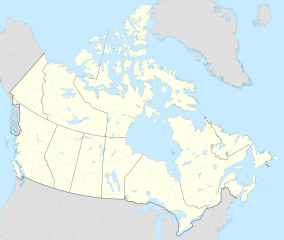Duck Mountain Provincial Park (Saskatchewan)
This article includes a list of references, related reading or external links, but its sources remain unclear because it lacks inline citations. (April 2013) |
| Duck Mountain Provincial Park | |
|---|---|
 | |
| Location | Rural Municipality of Cote & Rural Municipality of St. Philips, Saskatchewan, Canada |
| Nearest town | Kamsack |
| Coordinates | 51°41′N 101°38′W / 51.683°N 101.633°WCoordinates: 51°41′N 101°38′W / 51.683°N 101.633°W |
| Area | 150 km2 (58 sq mi) |
| Governing body | Saskatchewan Parks & Recreation |
| Website | website |
Duck Mountain Provincial Park is a Saskatchewan Provincial Park, located 14 km east of the town of Kamsack and stretches some 12 kilometres eastward to the Saskatchewan/Manitoba boundary. It is centered near coordinates 51° 41′N, 101° 38′W. The park covers approximately 150 square kilometres.
Road access to the park is via Highway 57, which connects Highway 5 to PTH 83.
Duck Mountain is a feature of the Manitoba Escarpment, and is a rise of forested (formerly glaciated) land between the Saskatchewan prairie and the Manitoba lowlands. It is some 200m higher than the floor of the Assiniboine River valley to the west, and some 400m higher than the Manitoba lowlands to the east. The landscape is rolling, with numerous ponds and creek channels. The soils are stony and are underlain with glacial till.
The area represents the southern limit of the boreal forest, in its transition zone to aspen parkland. The forest trees include white spruce, black spruce, tamarack larch, trembling aspen, balsam poplar, and paper birch. The park also has a fair number of balsam fir, even though it is at the extreme western limit of the natural range of that species. The flatter land areas surrounding the park have almost entirely been converted to cereal grain farmland, making the park (and the contiguous Manitoba Duck Mountain Provincial Forest) an environmental refuge for such large animals as elk, moose, black bear, lynx, bobcat, and timber wolf. Other animals, such as white-tailed deer and coyote, are also found in abundance in the forest, but roam more freely into the surrounding agricultural lands and are thus less reliant on the park. Fish species include walleye, yellow perch, northern pike, burbot, and white sucker.
Madge Lake is the largest body of water in the park and serves as its central tourist attraction. Seasonal recreational activities in and around the lake include fishing, hunting, hiking, bicycling, swimming, boating, water skiing, alpine skiing, cross country skiing, snowmobile riding, horseback riding, tobagganing, miniature golf, and 18-hole golf. The area also provides abundant wildlife viewing opportunities, especially in the immensely large local breeding flock of ducks and other waterfowl.
Duck Mountain Lodge operates as a year-round resort hotel in the park, and a large (summer) seasonal campground and rental cabins are also in the park. Over 300 private vacation residences (cottages) can also be found around the lake. There are two public swimming beaches (Ministik Beach and Pickerel Point Beach) constructed with artificially supplied sand.
The large amount of tourism development in the park is the cause of growing environmental concern. Winter time use of the park has especially increased with the development of the year-round lodge. The park is now regarded as having reached its development potential and there exists considerable opposition to further development. Some proposed development projects - such as the increase in the number of cottages in Benito subdivision - have been shelved, and probably abandoned.
There is also a Manitoba provincial park with the same name. The two parks lie in different provinces and although they are geologically and environmentally similar, and near each other geographically, they are two separate entities and not physically or politically connected.
References[]
External links[]
- [Duck Mountain Lodge and Cabins]
- [Duck Mountain Provincial Park]
- [Duck Mountain Ski Area]
- [Madge Lake Golf Course]
- Fish Species of Saskatchewan
- IUCN Category II
- Cote No. 271, Saskatchewan
- Provincial parks of Saskatchewan
- St. Philips No. 301, Saskatchewan
- Division No. 9, Saskatchewan
- Saskatchewan Division No. 9 geography stubs


